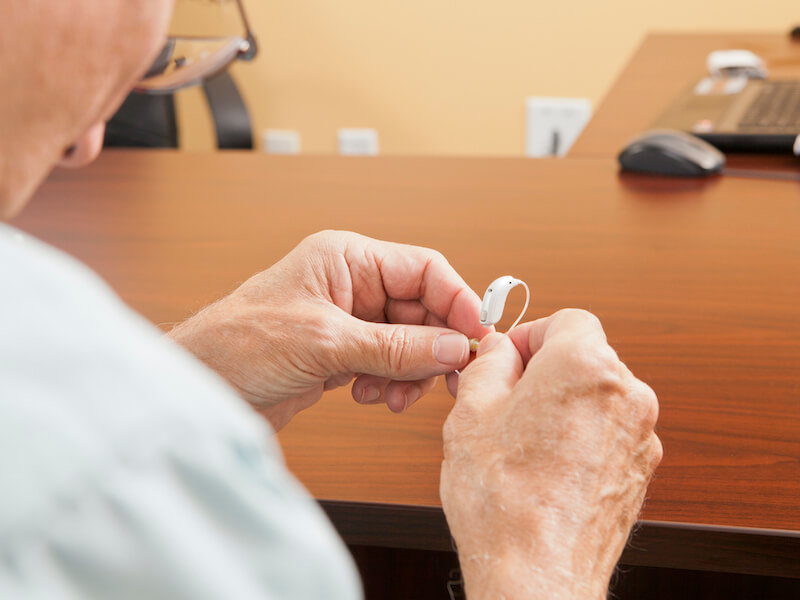
You go out of your way to be certain your hearing aids are well cared for. When you go to sleep, you always put them comfortably on the charger and you clean them daily.
Suddenly and discouragingly, your hearing aids aren’t working the way they used to. There are several things you can do to diagnose the problem, luckily. Not doing any further damage is your number one priority so you won’t need to replace them.
Hearing aid troubleshooting
You kept the owner’s manual that came with your shiny new hearing aids, right? Hopefully, you did so that you can check with your owner’s manual to perform maintenance and troubleshooting. Following your owner’s manual is important because every model of hearing aid is different.
Here are some things you can check on most models:
- Keep your microphone clear: Check your hearing aid to find out if anything is obstructing the microphone. A blocked microphone can create feedback or can cause your hearing aids to sound broken or quiet.
- Check for visible damage: Do you notice any visible cracks or loose components around the shell of your hearing aid? If you discover cracks, it could suggest that moisture is getting in and there could be more extensive damage.
- Wax accumulation: Make sure there is no wax on your hearing aid by giving it a visual check. Even if you perform routine cleaning, sometimes wax can build up quickly, so it’s worth checking this off your list.
- Check your battery: You’ll still want to assess the battery power even if you had your hearing aids on the charger overnight. It may be a good plan to check if you might need new batteries or if the old ones are properly inserted, especially if your batteries are replaceable.
Once again you can discover how to deal with each of these concerns by referring to your owner’s manual. In some cases, you may be able to perform maintenance yourself.
When does my hearing aid require repair?
If your hearing aid keeps malfunctioning after you have performed basic upkeep and troubleshooting, it’s likely that your hearing aid will have to be professionally repaired. That may not always sound desirable, after all, you depend on your hearing aid for day-to-day communication (not to mention dinners with your family, keeping up to date with your favorite Netflix series, and so on).
It’s certainly worth taking note that “repair” doesn’t necessarily mean “send your hearing aids in for service and wait several weeks”. Sometimes, we can do the repair in office and you can take it with you when you leave.
Or, depending on the degree of the damage, you could get your hearing aids back in a few hours.
There are still some cases where such fast repair is not possible. A backup pair of hearing aids may be required in these situations. Perhaps you have an old pair that will do temporarily in a pinch. We might even be able to loan you a pair while you are waiting.
Don’t wait to get help with your hearing aids
It’s essential to have your hearing aid assessed and repaired if you start to notice the audio quality is beginning to falter.
Any degree of downtime should be avoided. Untreated hearing loss can impact your overall health, and that includes your mental health. More to the point, once your hearing aids are forgotten in a box somewhere, it’s all too easy to pretend they’re not there, all the while, your hearing gets worse and worse.
Keeping those hearing aids in good working order is the key to keeping your hearing healthy. Keeping them charged, clean, and when necessary, professionally repaired is the best way to do that.